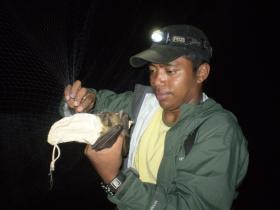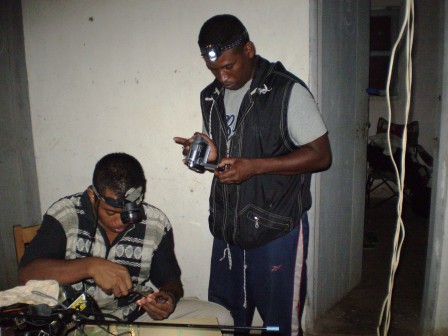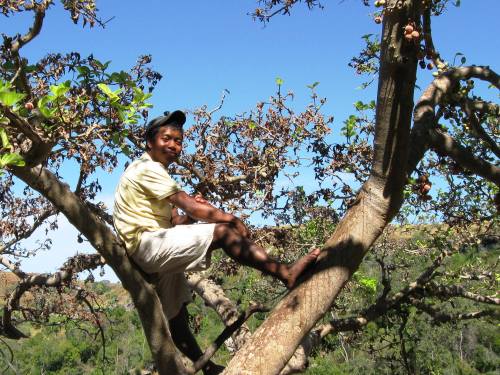By Dr Radosoa A. Andrianaivoarivelo – Kibale 2004

Two of the three bats of Madagascar are categorized as endangered according to the IUCN red list, but all of them are heavily threatened by habitat loss and severe hunting. In some areas of Madagascar, they are considered as a threat to fruits of economic importance such as the lychee (Litchi chinensis) and the Japanese persimmon (Diospyros kaki) and are therefore persecuted in the trees where they feed at night (Andrianaivoarivelo et al. 2007). For these reasons, I led a research project on the dietary behaviors of the fruit bats to investigate whether they prefer food from natural habitats over alien, economically Important fruit species or vice versa (Andrianaivoarivelo et al. 2012).
We found that chemical composition was the most important determinant of fruit selection by bats. Commercially important fruits tend to have higher fructose content than native plant species (e. g. Ficus spp). Our results indicate that lipid and calcium content were more important than fructose in fruit selection and commonly sought after by the fruit bats. Consequently, the bats were heavily persecuted due to their diet preference which was unfairly considered “destructive” (Andrianaivoarivelo et al; 2011). A few hunters would go to the point of hunting the cave dwelling Rousettus bats. Such intensive hunting appears either during or outside the fruiting season of the economically important fruits.

The conservation of these species is particularly challenging because they can easily be hunted in their roosts. Habitat degradation such as forest clearing seemed to impact the habitat used by the Madagascan rousette (Rousettus madagascariensis). We found that roosts were associated with humid forests and the loss of vegetation around caves rendered them unsuitable for habitation by the bats (Andrianaivoarivelo et al; 2011).
During our study we conducted informal sensitization and awareness programmes about the important role of the fruit bat with great results. After the study we noted that more people became conscious of the value of bats and are now helping in spreading the knowledge that bats are important especially in the seed dispersion process and therefore contribute to the regeneration of forests. The locals are now aware that the fruit bats prefer native plants and fruits rather than the commercially imported fruits and therefore cause no disturbance to the forests where the bats feed. In our study site in Eastern Madagascar, we did not find any evidence of fruit bats in the markets or restaurants in the towns. We therefore would conclude that hunting is undertaken by a small number of individuals at each roost, who use them for domestic consumption which is also motivated by the scarcity of the protein resources (e.g. meat, eggs or peanut) in the remote villages.

Our research findings have been very useful and with the knowledge and skills I gained during the TBA course, I have managed to conduct more activities including fundraising to boost our community based conservation programs. This has also come in handy when seeking support from donors and partners as I use both the findings and skills gained to explain to them reasons why conservation or socio-economic projects should be conducted in fruit bats’ habitats which face severe threats and the possibility of complete habitat loss.

